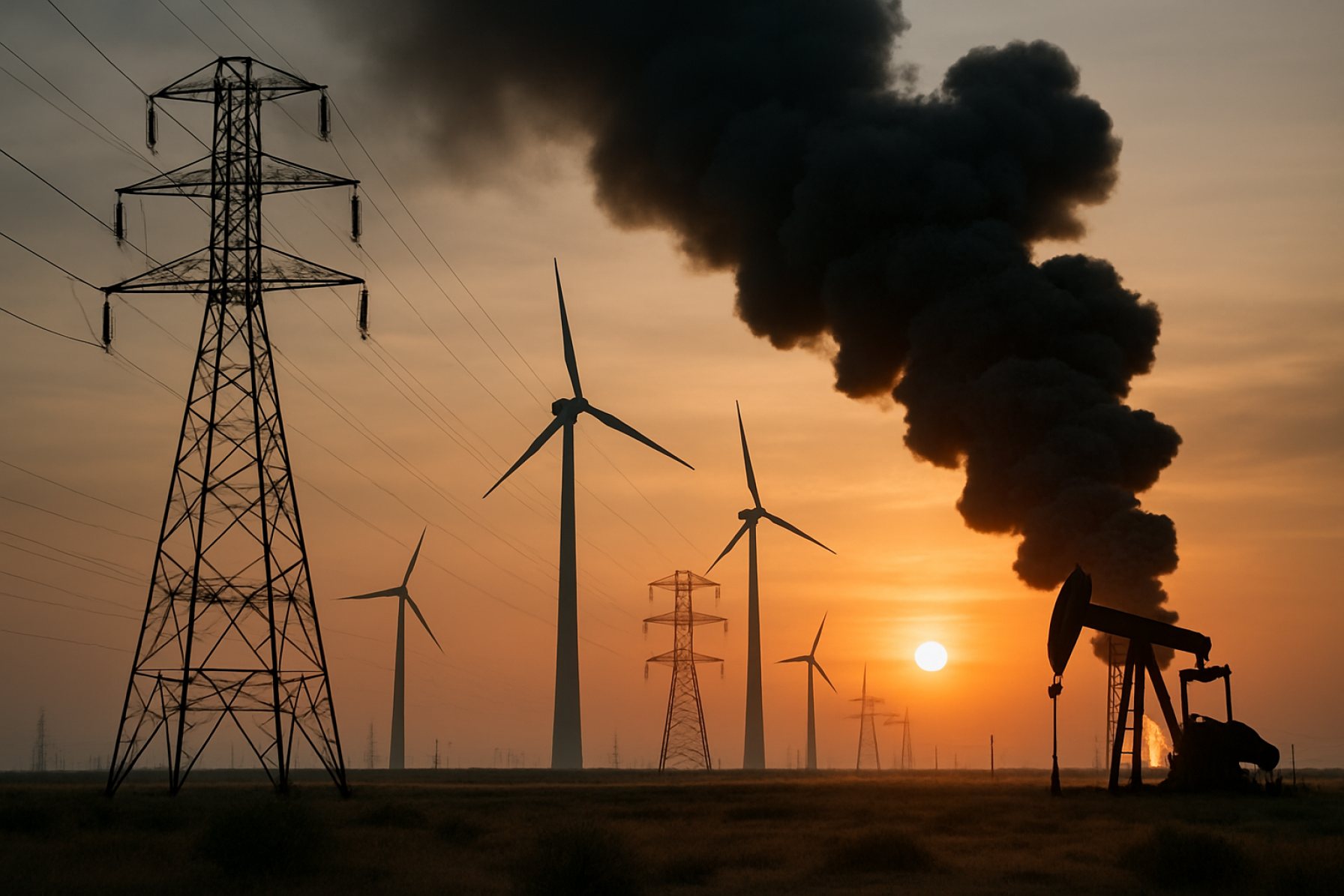Power Outages, Booming Demand, and AI: Why 2025 Is the Most Unpredictable Year for Energy in History
Global electricity demand is soaring in 2025, exposing the grid’s vulnerabilities—and changing how the world powers homes and business.
- +2.2%: Global energy demand growth in 2024 (IEA)
- 23 hours: Duration of April 2025 Iberian Peninsula blackout
- 180,000 TWh: Current annual global energy consumption (BP)
- ~4%: Annual electricity demand growth forecast through 2027 (IEA)
Electricity powers our world—but in 2025, billions are learning just how fragile that world can be. New data from the International Energy Agency and UN Environment Programme reveals that energy demand is rising at its fastest pace in decades, driven by record-breaking heatwaves, electrified transportation, and power-hungry digital technologies like artificial intelligence.
On April 28, 2025, a massive blackout swept across Western Europe’s Iberian Peninsula, leaving millions without power for almost a full day. This catastrophe cost Spain alone more than €150 billion and exposed the dangerous weaknesses in our transition to renewable energy.
Q: Why Is Global Energy Demand Surging in 2025?
Electricity demand reached new highs in 2024, jumping 4.3%—double the average annual increase. Rising industrial output, the shift to electric vehicles, widespread adoption of air conditioning, and the explosion in data center construction for AI and cloud computing are pushing the grid to its limit.
Experts at the IEA predict that, between 2025 and 2027, the world will use more extra electricity than Japan’s entire annual consumption. By 2050, electricity’s share could hit 50% of all energy used, up from today’s 20%.
Q: What Happened During the 2025 Iberian Blackout?
The 23-hour power outage that hit Spain, Portugal, and parts of France in April 2025 was a wake-up call for global energy planners. As solar power output suddenly plummeted, overloaded grids failed to rebalance supply and demand. The chain reaction left millions in the dark—and the economic fallout was staggering.
The root cause: an overreliance on solar energy without enough flexible backup or advanced energy storage. The incident made it clear that smart grids, massive battery banks, and international cooperation are no longer optional.
How-To: Build a Resilient, Climate-Proof Grid in the Age of Renewables
- Invest in clean energy—but couple it with grid modernization and large-scale storage solutions.
- Expand the use of electric vehicles and heat pumps, helping decarbonize transport and heating sectors.
- Accelerate adoption of “smart grids” to detect and respond to outages in real time, especially as renewables fluctuate.
- Strengthen cross-border electricity links for better regional support during supply shocks.
- Prioritize energy security alongside climate goals—extreme weather is now a real and growing grid threat.
Türkiye: A Case Study in Rapid Energy Growth
Türkiye’s electricity demand has nearly tripled in two decades, reaching about 350 TWh by 2024. Forecasts show this could soar to 510 TWh by 2035! Despite renewables now making up 60% of installed capacity, their share of actual production is just 40–45%, leaving the grid exposed during periods of low sun or wind.
To avoid major blackouts and meet climate goals like “2053 Net Zero Emissions,” Türkiye—and nations like it—must embrace battery storage, flexible power networks, and emergency plans for climate-driven disruptions.
Q: Why Are Energy Blackouts Becoming More Common?
As climate change intensifies, so do the risks. Storms, drought, and heat waves cut both fossil and renewable power at just the wrong moments. Meanwhile, the world’s appetite for electricity is growing—and our dependence on digital systems only amplifies the consequences when the lights go out.
Strengthening grid resilience and storage, adapting to new threats, and managing the intermittent nature of renewables are the linchpins for securing our future energy supply. Top organizations like the IEA urge urgent modernization to avoid more Iberian Peninsula-scale disasters.
Don’t Wait for the Next Blackout – Demand Smart Energy Now!
- Check if your local providers use renewable + storage solutions
- Support upgrades to electric vehicles, heat pumps, and energy-efficient tech
- Advocate for grid modernization in your region
- Prepare a basic blackout kit: batteries, lights, backup chargers
- Stay informed with real-time grid and weather alerts
The future of energy is electric, digital, and unpredictable. Stay ahead—get prepared, get resilient, and spark a cleaner, safer tomorrow.
